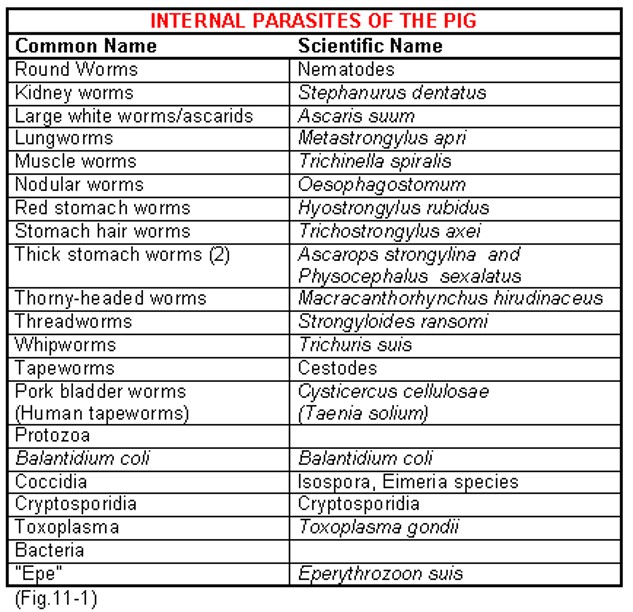



Endoparasites (internal parasites)
Background and history
These parasites must all use nutrients from the host to multiply and survive. They are found in the digestive tract, the kidneys, liver, lungs or the blood stream.
In the sow, the important parasites are the large white worms ascarids (Ascaris suum), red stomach worms (Hyostrongylus rubidus) and whip worms (Trichuris suis).
The sow becomes the source of potential infection to piglets. The threadworm (Strongyloides ransomi) is important in the piglet. The life cycles of all are direct from eggs in faeces to adult in the intestine.
Internal parasites are an uncommon problem in the weaned, growing and finisher pig unless they are housed in continuously occupied straw based or bare concrete pens in which case ascarids may become a problem.
There are four groups of endoparasitic worms: nematodes (roundworms); thorny-headed worms; tapeworms and protozoa:
| Large white worm Eggs (Ascaris suum) | Large white worm (Ascaris suum) |
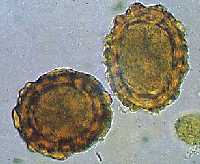 |  |
| Threadworm Eggs (Strongyloides ransomi) | Threadworm (Strongyloides ransomi) |
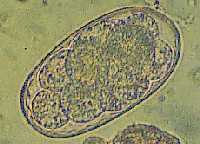 | 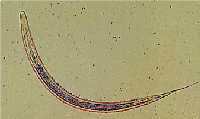 |
| Whipworm Eggs (Trichuris suis) | Trichinella (Encysted larvae of trichinella spiralis) |
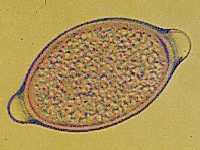 |
Clinical signs
Sows
- Coughing.
- Loss of body condition.
- Hairy pigs.
- Vomiting.
- Blood in faeces but rarely.
- Anaemia.
- Diarrhoea - sloppy.
Piglets (Thread worm)
- Coughing.
- Stiffness.
- Pain.
- Vomiting.
- Bloody diarrhoea.
- Some mortality.
Weaners and growers
- Coccidiosis could cause diarrhoea within 7 to 10 days of entry to continually used pens.
- Strongyle infections (poor growth and sloppy faeces) within 3 to 4 weeks
- Coughing.
- Blood in faeces.
- Pneumonia / heavy breathing.
- Pale pigs.
Diagnosis
This is based on symptoms and identification of the parasites. Laboratory examination of faeces for worm eggs.
Causes
- Management systems that allow regular access to faeces.
- Faeces allowed to accumulate for more than 3 - 4 days (allows eggs to become infective).
- Moist wet areas encourage survival of eggs.
- No all-in, all-out management.
- Permanently populated yards or paddocks outdoors.
- Failure to monitor faeces for egg output.
- Failure to carry out routine treatments when indicated.
- Continuously used pens increase the risks of infection.
- Wet dirty floors.
- Carrier pigs.
Prevention
Controlling parasites requires an understanding of their life cycle. Procedures can then be adopted that together with anthelmintics, break this cycle and thus prevent re-infection. There are two types of life cycle, a direct one and an indirect one.
Treatment
Controlled application of anthelmintics into the herd.







